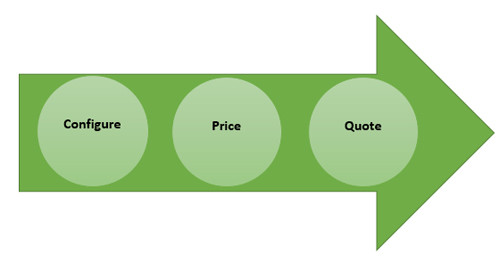It can take a long time to turn an idea into reality. Concepts for a new telecoms product such as a TV bundle, for example, get discussed and whiteboarded, everybody is enthusiastic and ‘hey we should get this out by Christmas’ is the parting shot. Except, by the time the right systems are in place, it’s already Easter and suddenly everyone is looking to launch the following Christmas instead.
However, these days, few organisations have the luxury of time, especially in global, high-octane markets such as telecoms or software. If one brand doesn’t do it, its competitors will. Yet product portfolios are becoming increasingly sophisticated across all industries due to technology advances, compliance regulations, globalisation and customer demands.
Sales and marketing teams struggle to optimise the potential of this full product catalogue and outdated legacy IT systems mean they are faced with a confusing array of configurations. The temptation is to stay safe – stick within the comfort zone, but in doing so miss out on possible revenue opportunities.
This is one of the many reasons that the acronym CPQ is suddenly becoming familiar around the sales and marketing community. CPQ is a set of software applications which at a rudimentary level enables businesses to Configure, Price and Quote. No prizes for guessing, so far.
But, increasingly a new generation of CPQ solutions are being seen as something more than this. They are providing a platform to quickly adapt and launch goods and services. But they then go on and support teams throughout the entire product and sales cycle. By ensuring orders are accurately configured there are higher levels of consistency and fewer errors. They replace the clunky and convoluted systems and the need for excessive admin time that frustrate many a sales team. From a leadership perspective they provide a way to react rapidly to changes in the market and identify the most efficient ways to fund growth.
So if a business is considering CPQ, how can they make the most of their investment? Here are a few key issues to consider:
1. CPQ isn’t an add-on, it’s a disrupter. CPQ presents a real opportunity to transform a business for the better by putting innovation at its heart – and these chances don’t come along all that often. Of course, CPQ can simply replace older technology and still introduce great operational efficiencies and cost savings. However, its real strength is the way it provides unprecedented agility to change the way a business goes to market. It enables businesses to experiment and find the right formula – the innovative products, the commercial models and the most effective channels to market, enabling them to disrupt and lead the field.
2. Look beyond sales. CPQ is a fantastic solution for sales, enabling teams to exceed targets for new customers and renewals. But to maximise potential, extend it to:
• Product managers – to run the entire product lifecycle, developing and implementing go-to-market plans.
• Marketing teams – to easily develop and implement promotional plans.
• Customer support teams – to ensure customer needs are satisfied.
• Senior management – to respond to market changes quickly.
3. Align the CPQ sales process to the customer experience. Try to understand what is important to customers, from sign-up to billing. CPQ systems help build customer experience foundations based on a genuine understanding of the most valuable customer interactions.
4. Use CPQ to unify sales channels. Think beyond traditional channels to provide a unified buying experience. CPQ can provide a single customer view to provide a seamless cross-channel experience, so encouraging loyalty and retention.
5. Get the buy-in. Make sure colleagues understand CPQ and its benefits from the outset. For a start, don’t just use the acronym and expect everyone to understand. Explain the predicted and measurable improvements for each business function and focus on return on metrics that each team will understand. Talk about the number of quotes per person, higher percentages of quota achieved and increased retention and sales people will understand. On the other hand, marketers will appreciate the shorter time to market, improved conversion rates and lower costs per lead. Customer service will be looking for other benefits such as – a good user experience and an improvement in productivity through a reduction in administration.
6. Consider the cloud. As with many of today’s solutions, CPQ tools can be delivered as software-as-a-service (SaaS) through the cloud. The system will typically come preconfigured and ready for set-up and integration into the business. The responsibilities for running and maintaining the system lie with the vendor.
7. Remember the IT department. CPQ takes certain elements out of the IT department and puts it into the hands who are not necessarily experts or technological wizards. This provides a solution to any IT skills shortages or frees up existing teams. Instead of concentrating on the nuts and bolts and making systems speak to one another they can first ensure systems are being adopted properly and that everyone is accessing the right information. They can then move downstream to information management, focusing on more proactive and strategic tasks such as analytics. However, this may need some planning and careful management.
Of course, CPQ can’t solve every business challenge. However, it can help break down organisational barriers and provide a single view of all aspects of the customer, the sales process and the product. In this way it will enable all areas of the business to meet their individual objectives. But it will also help develop an integrated and successful business ready to meet any future challenge.






